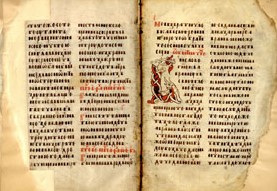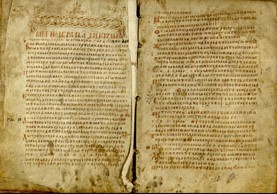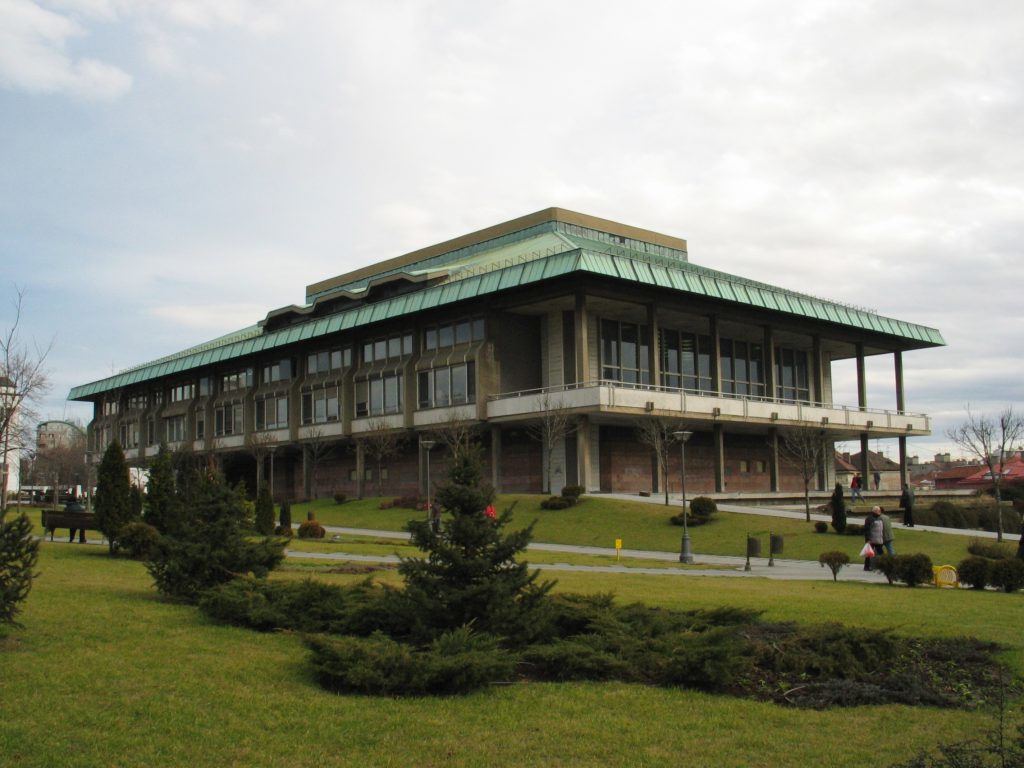- About us
-
- Catalogs and collections
-
-
- Collections
- The Collection of Handwritten Books
- Collection of Early Printed Books
- Reference Collection
- The Early Book, Rare Book and Miniature book Collections
- The collection of more recent literary manuscripts and archival materials
- Legal Information Centre
- Centre for Library and Information Sciences
- Music collection
- Visual Art collections
- Collection of CD Editions
- Cartographic Collection
- The Collection of Photographic Documents
- Other Special Collections
- Legacy Collections
- Collections
-
- Publications
- Services
- Ask librarian
- Contact
The Collection of Handwritten Books
The Collection of Handwritten Books holds a variety of works in Serbian and other variants of the Old Slavonic language (Russian, Bulgarian and Wallachian-Moldovan), as well as early printed books dating from 1494 to 1638. Out of around 1,300 books, only a dozen survived the pillaging during World War I and the destruction in World War II during the German bombing of Belgrade on 6 April 1941. Even though the major part of the collection has been amassed in the last 60 years, it is immensely significant for delving into the spiritual and societal aspects of Serbian life from the 13th to the 19th century. It encompasses biblical writings, sermons, hagiographies, apocryphal texts and ascetic literature. Legal documents, diverse liturgical books, Serbian genealogies, historical records, geographical treatises, pharmacological writings and other secular works are also part of this collection. Noteworthy among the Cyrillic manuscripts written in the Serbian variant of Old Slavonic are titles like Belgrade Prophetologion (Beogradski parimejnik, first quarter of the 13th century), Bratko Menaion (Bratkov minej, second quarter of the 13th and first half of the 14th century), Sermons by Theodor the Studite (Besede Teodora Studita, late 13th and early 14th century), Ladder (Lestvica, mid-14th century), Collection of Serbian Hagiographies by “tah Marko” (1370/1375), Alexander Romance (Aleksandrida, late 15th century), Prizren Transcription of Dušan’s Code (1525/1530) and more.
The National Library of Serbia is entrusted with the protection, preservation and study of the collection of handwritten and early printed books originating from the Visoki Dečani Monastery. This collection brings together a significant number of early Serbian handwritten books. In addition to tending to these manuscripts, the Archaeography Department oversees an archive containing numerous photographs and microfilms of manuscripts from both local and international collections. It also houses the richest watermark collection in the Balkans. The department’s staff offers assistance and information to users who are welcome to visit the Archaeography Reading Room and Library, open from 9 am to 2 pm on weekdays.
The Belgrade Prophetologion (a book of prophecies and readings from the Old and New Testaments recited during evening worship, especially on the eve of holidays) stands as one of the finest examples of early Serbian literature, both in its script and overall appearance. Written on parchment in the Serbian variant of Old Slavonic, its meticulous calligraphic strokes attest to a well-established scribal tradition in Serbia at the beginning of the 13th century. This significant manuscript disappeared during World War I (1915), only to resurface in Germany, where it was acquired in 1969, along with nine other manuscripts that once belonged to the National Library.
The Prizren Transcription of Dušan’s Code was written on paper in the early 16th century, in the Serbian variant of Old Slavonic. Besides Dušan’s Code, the manuscript mainly comprises legal or ecclesiastical texts, such as the short version of Syntagma Canonum by Matthew Blastares, Rules of St. John Nesteutes, excerpts from the Syntagma by Saint Basil, questions and answers on the church, Justinian’s Code, a brief rule about fasting and a Patriarch Gennadius’s epistle. This manuscript disappeared during World War I (1915) only to resurface in Germany, from where it was returned to Belgrade.
The Bratko Menaion, a liturgical book consisting of twelve volumes corresponding to the months of the church year from September to August, is associated with the period between 1234 and 1243, the second quarter of the 13th century and the first half of the 14th century. This handwritten book was penned in the Serbian variant of Old Slavonic, primarily on parchment, although it contains a few pages of paper. According to the note from one of the scribes, Presbyter Bratko (after whom the Menaion was named), the oldest section was written during the reign of King Vladislav (1234–1243). In terms of content, the book is a Service Menaion for September, October and November and a Festal Menaion for the period from December to August.
Prepared by Dr Dragana Novakov



